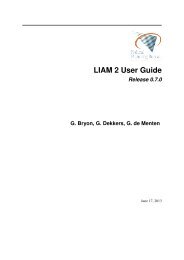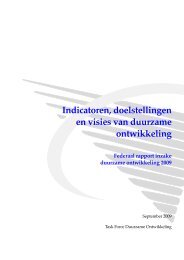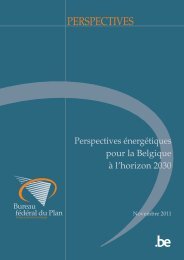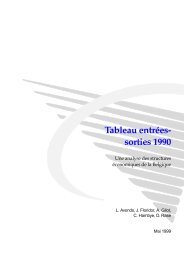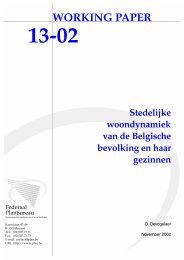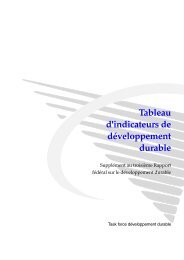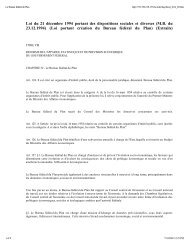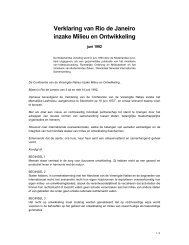long-term care use and supply in europe: projections for germany ...
long-term care use and supply in europe: projections for germany ...
long-term care use and supply in europe: projections for germany ...
You also want an ePaper? Increase the reach of your titles
YUMPU automatically turns print PDFs into web optimized ePapers that Google loves.
LONG-TERM CARE USE AND SUPPLY IN EUROPE | 17<br />
3.2 Study design<br />
3.2.1 Aim<br />
The purpose of the present analysis is to identify the ma<strong>in</strong> de<strong>term</strong><strong>in</strong>ants of <strong>in</strong><strong>for</strong>mal <strong>and</strong> <strong>for</strong>mal <strong>care</strong> <strong>use</strong><br />
<strong>in</strong> different LTC systems <strong>and</strong> to <strong>use</strong> this <strong>in</strong><strong>for</strong>mation to produce estimated probabilities of <strong>care</strong> <strong>use</strong> by<br />
relevant characteristics of older persons. These estimates will be comb<strong>in</strong>ed <strong>in</strong> Chapter 4 with projected<br />
numbers of older persons by the same characteristics <strong>in</strong> order to project future numbers of LTC <strong>use</strong>rs.<br />
The analysis <strong>in</strong>cludes three countries – Germany, the Netherl<strong>and</strong>s <strong>and</strong> Spa<strong>in</strong> – each representative of a<br />
cluster of countries with a different type of LTC system, as identified <strong>in</strong> WP 1 of the ANCIEN project<br />
(Kraus et al., 2010). Cluster 1, to which Germany be<strong>long</strong>s, consists of countries where a low level of<br />
public spend<strong>in</strong>g is comb<strong>in</strong>ed with a modest share of private spend<strong>in</strong>g, high <strong>in</strong><strong>for</strong>mal <strong>care</strong> <strong>use</strong> <strong>and</strong> high<br />
<strong>in</strong><strong>for</strong>mal <strong>care</strong> support. The Netherl<strong>and</strong>s be<strong>long</strong>s to cluster 2, a cluster of Northern European countries<br />
characterized by high public LTC spend<strong>in</strong>g, low private spend<strong>in</strong>g, low <strong>in</strong><strong>for</strong>mal <strong>care</strong> <strong>use</strong> <strong>and</strong> high<br />
<strong>in</strong><strong>for</strong>mal <strong>care</strong> support. Spa<strong>in</strong> <strong>and</strong> the other countries of cluster 3 share the profile of cluster 1 with regard<br />
to <strong>in</strong><strong>for</strong>mal <strong>care</strong> <strong>use</strong> <strong>and</strong> support, but have a much higher level of private responsibility <strong>and</strong> a somewhat<br />
higher level of public spend<strong>in</strong>g. Pol<strong>and</strong> was selected as representative of a fourth cluster, characterized<br />
by a small public sector <strong>in</strong>volvement, more private spend<strong>in</strong>g, high <strong>in</strong><strong>for</strong>mal <strong>care</strong> provision comb<strong>in</strong>ed<br />
with few supportive measures <strong>for</strong> <strong>in</strong><strong>for</strong>mal <strong>care</strong>givers. However, due to the unavailability of <strong>care</strong> <strong>use</strong><br />
data, Pol<strong>and</strong> could not be <strong>in</strong>cluded <strong>in</strong> the present analysis 8 . Given the considerable differences between<br />
the clusters <strong>in</strong> the organisation <strong>and</strong> f<strong>in</strong>anc<strong>in</strong>g of <strong>long</strong>-<strong>term</strong>, one can reasonably expect that the effects of<br />
predictors of <strong>care</strong> <strong>use</strong> vary across the three countries.<br />
3.2.2 Data <strong>and</strong> methods<br />
This study <strong>use</strong>s pooled data from Wave 1 (2004 <strong>and</strong> 2005) <strong>and</strong> Wave 2 (2006 <strong>and</strong> 2007) of the Survey of<br />
Health, Age<strong>in</strong>g <strong>and</strong> Retirement <strong>in</strong> Europe, release 2.3.1. The analytical sample was restricted to<br />
respondents aged 65 <strong>and</strong> over, liv<strong>in</strong>g at home, <strong>and</strong> <strong>in</strong>cludes 2,491 observations <strong>for</strong> Germany, 2,134<br />
observations <strong>for</strong> the Netherl<strong>and</strong>s <strong>and</strong> 2,265 observations <strong>for</strong> Spa<strong>in</strong>.<br />
a. Dependent variable<br />
The variable of <strong>in</strong>terest is the type of help older persons receive with personal <strong>care</strong> (activities of daily<br />
liv<strong>in</strong>g or ADLs) or with nurs<strong>in</strong>g <strong>care</strong>. The analysis does not <strong>in</strong>clude help with ho<strong>use</strong>hold tasks <strong>for</strong> the<br />
follow<strong>in</strong>g reasons:<br />
1. Results are <strong>use</strong>d to make <strong>projections</strong> of <strong>for</strong>mal <strong>and</strong> <strong>in</strong><strong>for</strong>mal <strong>care</strong> <strong>use</strong>, which start from<br />
<strong>projections</strong> of <strong>care</strong> needs def<strong>in</strong>ed as hav<strong>in</strong>g ADL limitations. In WP 2 of the ANCIEN project,<br />
<strong>projections</strong> of the number of older persons need<strong>in</strong>g LTC <strong>care</strong> have been developed. LTC need has<br />
been def<strong>in</strong>ed as hav<strong>in</strong>g ‘at least one limitation <strong>in</strong> basic activities of daily liv<strong>in</strong>g (ADL-disability),<br />
based on the Katz ADL disability scale’ <strong>and</strong> items <strong>in</strong>cluded are: bath<strong>in</strong>g, dress<strong>in</strong>g, eat<strong>in</strong>g, <strong>in</strong>door<br />
transferr<strong>in</strong>g <strong>and</strong> toilet<strong>in</strong>g/cont<strong>in</strong>ence (Bonneux, van der Gaag, & Bijwaard, 2011). Projections of<br />
the number of persons need<strong>in</strong>g help with ho<strong>use</strong>hold tasks have not been provided.<br />
2. In<strong>for</strong>mation <strong>in</strong> SHARE on <strong>in</strong><strong>for</strong>mal help with ho<strong>use</strong>hold tasks is limited. One could argue that<br />
ADL disabled persons generally need help with ho<strong>use</strong>hold tasks or <strong>in</strong>strumental activities of daily<br />
liv<strong>in</strong>g (IADLs) also. There<strong>for</strong>e, it could be relevant to <strong>in</strong>clude ho<strong>use</strong>hold help, all the more so as<br />
studies have shown that <strong>use</strong> of <strong>for</strong>mal <strong>and</strong> <strong>in</strong><strong>for</strong>mal <strong>care</strong> differs <strong>for</strong> ho<strong>use</strong>hold help <strong>and</strong> personal<br />
<strong>care</strong>, but with a huge variation between countries (see <strong>for</strong> <strong>in</strong>stance Br<strong>and</strong>t et al., 2009). However,<br />
the SHARE data on help with IADL only <strong>in</strong>clude <strong>in</strong><strong>for</strong>mation on help from outside the ho<strong>use</strong>hold,<br />
not on help provided by ho<strong>use</strong>hold members. This could raise comparability issues, as <strong>for</strong><br />
<strong>in</strong>stance co-residence of older parents <strong>and</strong> their children differs considerably with<strong>in</strong> Europe. By<br />
8 Pol<strong>and</strong> participated <strong>in</strong> Wave 2 of SHARE, but due to a cod<strong>in</strong>g error which resulted <strong>in</strong> wrong rout<strong>in</strong>g the variables<br />
on home <strong>care</strong> are miss<strong>in</strong>g <strong>for</strong> all Polish cases.



